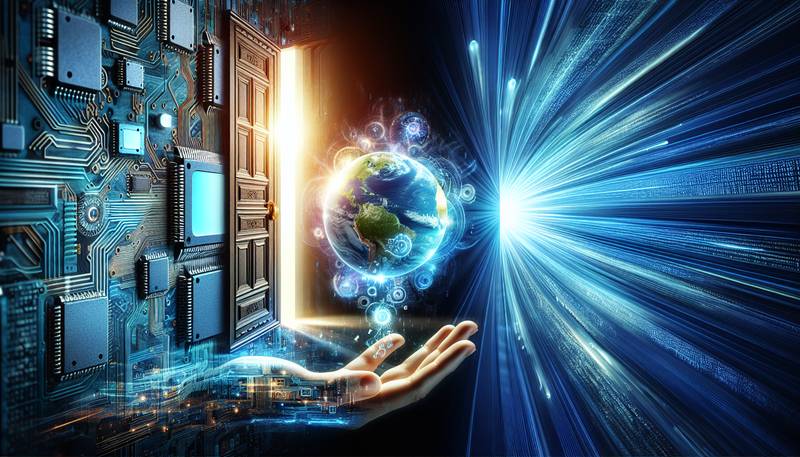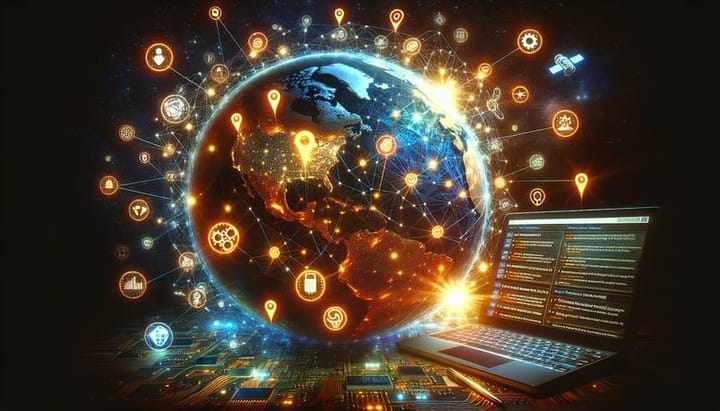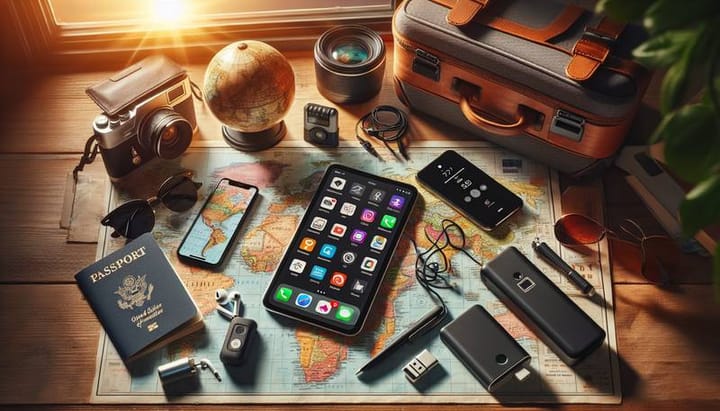Tech Trends to Watch: What's Next in Innovation

In an era where technology evolves at the speed of light, staying updated with the latest trends is not just beneficial, it's essential. The future is unfolding before our very eyes, with new innovations that once seemed like science fiction becoming part of our daily lives. In this guide, we'll explore the significant technological advancements that are on the horizon. From the implications of 5G to the widespread adoption of Artificial Intelligence and the expansion of the Internet of Things, we are on the cusp of a new reality. These are the tech trends that will redefine business models, reshape consumer habits, and reinvent how we interact with the world. Read on to discover the future of innovation and how it's set to transform every aspect of our lives.
The Rise of 5G
Imagine a world where your internet connection is not just fast, but lightning-fast. Downloading full-length movies in seconds, telemedicine allowing doctors to perform surgeries remotely, smart cities functioning seamlessly with interconnected devices; this is the world that 5G promises. The fifth generation of wireless technology, 5G, is more than just an improvement over its predecessors, it's a revolutionary leap forward. It offers data transfer speeds that dwarf 4G, with potential peak download speeds of up to 20 gigabits per second. This is not just about faster smartphones. The true potential of 5G lies in its incredibly low latency - the time it takes for devices to communicate with each other. This will be crucial for the next wave of technological advancements, such as self-driving cars that need to process colossal amounts of data in real-time to make split-second decisions. The capacity of 5G means it can handle exponentially more connected devices, paving the way for the Internet of Things to expand into every corner of our lives. This technology will reshape industries, revolutionize communication, and create opportunities we haven’t even imagined yet. While the rollout of 5G is still in its infancy, it has already begun to transform the tech landscape, and its full potential will unfold in the coming years.
Artificial Intelligence Everywhere
The term 'Artificial Intelligence' conjures images of sentient robots and supercomputers from sci-fi movies. However, AI is not just a staple of futuristic fantasies anymore; it's a reality that's improving the efficiency of industries and enhancing daily human life. At its core, Artificial Intelligence refers to systems or machines that mimic human intelligence to perform tasks and can iteratively improve themselves based on the information they collect. AI manifests in various forms, from the chatbots that service our customer support queries to sophisticated algorithms that predict consumer behavior. AI is used extensively in areas such as natural language processing, where computers understand and respond to human speech, and in machine learning, where algorithms learn from and make decisions based on data. It’s a tech trend that is permeating every sector, such as healthcare—where AI can help predict patient outcomes—to agriculture, where it can optimize crop yields and monitor soil health. The potential of AI is endless, with its constant learning capability evidence that we’ve merely scratched the surface of what it can achieve.
The Internet of Things (IoT) Expands
Not too long ago, the concept of having everyday objects connected to the Internet and each other seemed like a far-fetched idea. Today, this is a reality; enter the Internet of Things (IoT). IoT is a network of physical objects embedded with sensors, software, and other technologies with the purpose of connecting and exchanging data with other devices and systems over the Internet. These objects range from household items like refrigerators and thermostats to complex machines used in industrial environments. The growth of the IoT is being fueled by the increased availability of affordable sensors and the expansion of wireless networks. These interconnected devices collect vast amounts of data, and when coupled with powerful analytics, can provide insights that were previously out of reach. This can lead to improved efficiency, product enhancements, and better customer experiences. The smart home is perhaps the most familiar example of IoT in action, with devices that can control lighting, temperature, security, and entertainment at the tap of a smartphone. However, the IoT extends beyond our homes and is used in areas such as smart agriculture, where connected devices monitor crop conditions, or in smart cities, where IoT devices manage traffic flows and conserve energy. As IoT devices become more prevalent, they will continue to transform the way we manage, interact with, and understand our environments.
Virtual and Augmented Reality Go Mainstream
Virtual Reality (VR) and Augmented Reality (AR) are technologies that alter our perception of the world around us. VR immerses users in a completely virtual environment that is typically experienced via a headset or dedicated room. AR, on the other hand, overlays digital information onto the real world, which can be experienced through devices such as smartphones or AR glasses. These technologies are not just for gaming and entertainment; they have practical applications across multiple industries. For instance, in education, VR can transport students to ancient Greece, while AR can overlay a disassembled engine's components for engineering students. In real estate, potential buyers can take virtual tours of properties from anywhere in the world. For businesses, AR can revolutionize customer experiences and marketing, allowing consumers to 'try before they buy' by visualizing products in their homes. As the hardware and software for VR and AR become more accessible and user-friendly, these technologies will become increasingly integrated into our work and personal lives, offering experiences and opportunities that we can only begin to imagine.
Blockchain Technology Beyond Bitcoin
When most people hear “blockchain,” they think of Bitcoin and other cryptocurrencies. However, blockchain's potential extends far beyond the realm of digital currency. At its most basic, blockchain is a distributed database that maintains a continuously growing list of records, called blocks, which are secured from tampering and revision. This technology offers a level of security and transparency that is unparalleled in digital transactions. Beyond financial applications, blockchain is making waves in fields such as supply chain management, where it provides a tamper-proof record of a product’s journey from manufacturer to consumer. In healthcare, blockchain can secure and unify patients' medical records that are now scattered across different providers. In voting systems, it can ensure integrity by creating an immutable ledger of votes. As businesses and governments begin to understand the utility of blockchain in ensuring security and verifying transactions, we can anticipate its expansive growth into many areas of society that require indisputable records.
The Future of Work: Remote and Flexible
The concept of the traditional workplace is undergoing a profound transformation. The global pandemic has accelerated the shift towards remote and flexible work arrangements. While initially adopted as a necessary response to a crisis, many employers and employees have come to appreciate the benefits of this new way of working. The reliance on physical office space is diminishing as collaboration and productivity tools advance, allowing teams to work together effectively from disparate locations. This has opened up a broader talent pool for companies and given employees greater freedom in their personal and professional lives. Remote work has the potential to improve work-life balance, reduce carbon emissions, and stimulate economic growth in areas outside traditional commercial hubs. However, this shift also presents challenges, such as the need for effective communication channels and ensuring the security of remote networks. As we navigate this shift, the future of work promises to be more flexible, more diverse, and more connected than ever before.
Conclusion: Embracing the Tech-Driven Future
As we have explored in this guide, technology is not just advancing; it is accelerating. The trends we've discussed – the rise of 5G, the ubiquity of Artificial Intelligence, expanding Internet of Things, mainstreaming of Virtual and Augmented Reality, the versatility of Blockchain, and the reimagining of work – are all converging to create a future that is dynamic and full of promise. Navigating this future will require a spirit of innovation, adaptation, and a willingness to embrace change. It's an exciting time to be alive, as the boundaries of what's possible continue to expand. As consumers, businesses, and citizens of an increasingly connected world, we must stay informed and prepared for these changes as they shape our society in profound ways. After all, the future is not a distant reality; it is being written here and now, with each new line of code, each leap forward in connectivity, each ingenious application of new technology. The next chapter of innovation is ours to write, and the possibilities are limitless.


